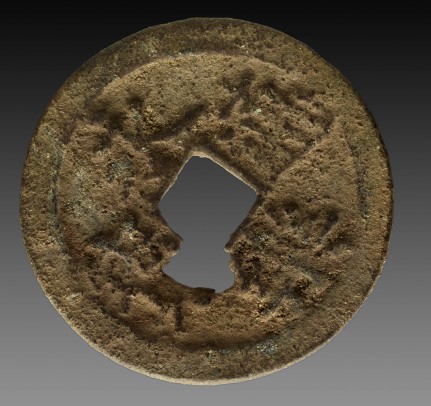‘Lucky’ coin evidence of ancient enterprise

The coin, called Yongle Tongbao, is made of copper and silver, with a hole in the center so it can be carried on a belt.
A 600-year-old Chinese coin found on a Kenyan island may be evidence of trade between China and East Africa, decades before the heralded discoveries of European explorers.
The coin was found in December 2012 during a joint expedition of scientists led by two UIC faculty members: Chapurukha Kusimba, curator of African anthropology at the Field Museum of Natural History and adjunct professor of anthropology, and Sloan Williams, associate professor of anthropology.
The expedition, backed by a National Endowment for the Humanities grant, set out to explore the biological and cultural origins of the Swahili civilization in Manda, off the northern coast of Kenya.
“The coin was just a lucky find on our part,” says Williams, who is interested in the effects of trade and migration on genetic patterning and ancestry.
The round coin, made of copper and silver, is called Yongle Tongbao. The coin has a square hole in the center so it can be carried on a belt; it is inscribed with the name of former Chinese Emperor Yongle, who reigned from 1403 to 1425 AD during the Ming Dynasty.
Yongle was interested in political and trade missions surrounding the Indian Ocean and often sent representatives on explorations to those lands.
After his death, Chinese rulers banned foreign expeditions. European explorers expanded their countries’ empires during the Age of Discovery, which began in the 15th century and continued to the 17th century.
Manda was home to an advanced civilization from about 200 to 1430 AD, with a prominent role in trade between the Northern East African interior and the Indian Ocean.
The coin’s discovery may indicate that trade was important on the island earlier than previously thought.
The researchers also found human remains and other artifacts that predate the coin.
“The site turned out to be so interesting and important that we are now planning to return and continue excavating for several more field seasons,” says Williams, who will oversee the archaeogenetics lab analyses in the project’s second phase.
